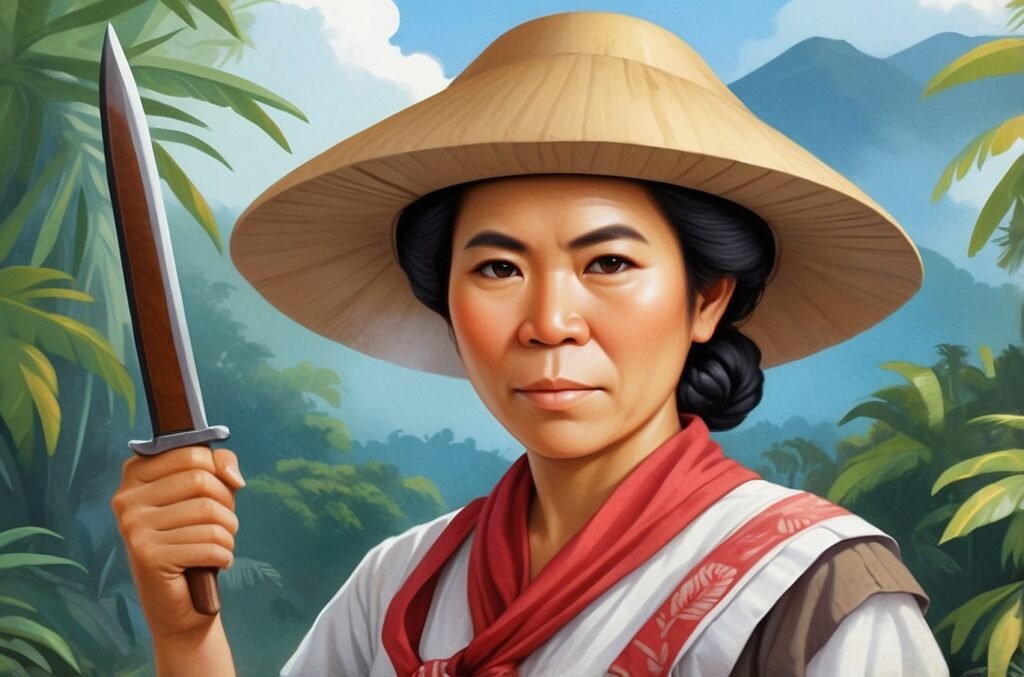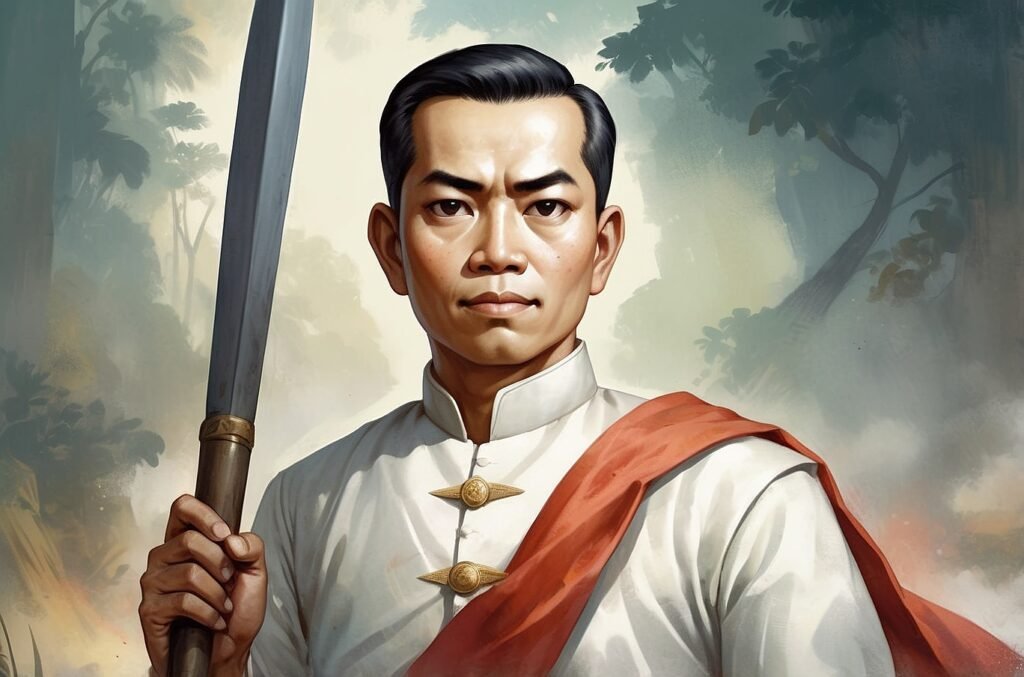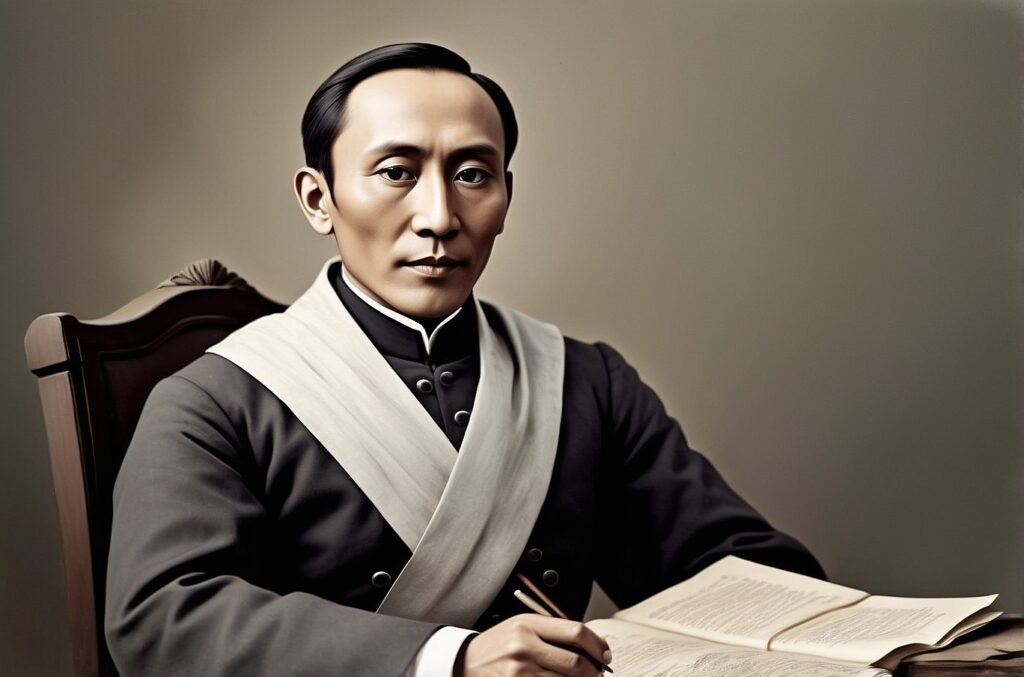Trinidad Tecson, a remarkable figure in Philippine history, stands out as a woman who defied societal norms and expectations to become a pivotal force in the Philippine Revolution against Spanish colonial rule. Known as the “Mother of Biak-na-Bato,” Tecson’s life and contributions exemplify the spirit of patriotism and the critical role women played in the struggle for independence. This blog post delves into the life, achievements, and lasting legacy of Trinidad Tecson, shedding light on her remarkable journey from a privileged background to becoming a revolutionary icon.
Early Life and Background
Birth and Family
Trinidad Tecson was born on November 18, 1848, in San Miguel de Mayumo, Bulacan, Philippines. She came from a prominent and affluent family, which provided her with opportunities that were uncommon for many women of her time. Her parents, Rafael Tecson and Tiburcia Perez, were well-respected members of their community, known for their wealth and influence. This privileged background would later prove to be both an asset and a challenge as Tecson navigated her path towards revolutionary involvement.
Education and Upbringing
Growing up in a wealthy household, Tecson received an education that was superior to that of many of her contemporaries. She was taught to read and write, skills that were not universally available to women in 19th century Philippines. Additionally, her upbringing instilled in her a strong sense of social responsibility and an awareness of the societal inequities that existed under Spanish colonial rule. These early experiences and teachings laid the foundation for her future role as a revolutionary and advocate for Philippine independence.
The Path to Revolution
Awakening to the Cause
Trinidad Tecson’s journey towards revolutionary involvement was gradual but profound. As she matured, she became increasingly aware of the injustices and oppression faced by her fellow Filipinos under Spanish colonial rule. The stark contrast between her privileged life and the hardships endured by many around her sparked a deep sense of empathy and a desire for change. This awakening was further fueled by the growing nationalist sentiment that was spreading throughout the Philippines in the late 19th century.
Joining the Katipunan
In 1895, at the age of 47, Tecson took a decisive step that would alter the course of her life. She joined the Katipunan, a secret revolutionary society founded by Andres Bonifacio. This act was particularly bold for a woman of her social standing and age. The Katipunan, which aimed to overthrow Spanish colonial rule through armed revolution, was predominantly male. Tecson’s decision to join not only demonstrated her commitment to the cause of Philippine independence but also challenged gender norms of the time.
Roles and Responsibilities
Upon joining the Katipunan, Tecson quickly proved her worth and dedication to the revolutionary cause. She took on various roles that were crucial to the movement’s operations:
| Role | Description |
|---|---|
| Nurse | Provided medical care to wounded revolutionaries |
| Supplier | Procured and distributed weapons and supplies |
| Messenger | Carried important communications between revolutionary leaders |
| Recruiter | Encouraged others, especially women, to join the cause |
| Combatant | Participated directly in armed conflicts against Spanish forces |
These diverse responsibilities showcased Tecson’s versatility and her willingness to contribute in whatever way was necessary for the success of the revolution.
The Mother of Biak-na-Bato
The Significance of Biak-na-Bato
Biak-na-Bato, a cave complex located in San Miguel, Bulacan, played a crucial role in the Philippine Revolution. It served as a hideout and stronghold for Filipino revolutionaries, including Emilio Aguinaldo and his forces. The caves provided natural protection and became a symbol of resistance against Spanish colonial rule. It was in this strategic location that Trinidad Tecson would earn her most famous moniker.
Tecson’s Role at Biak-na-Bato
Trinidad Tecson’s involvement at Biak-na-Bato was multifaceted and critical to the revolutionary efforts. Her contributions included:
- Establishing and managing a field hospital to care for wounded revolutionaries
- Organizing the procurement and distribution of supplies, including food and ammunition
- Providing strategic input and support to revolutionary leaders
- Boosting morale among the fighters through her unwavering dedication and presence
It was her tireless efforts in nurturing and supporting the revolutionary cause at Biak-na-Bato that earned her the title “Mother of Biak-na-Bato.” This nickname not only recognized her practical contributions but also symbolized her role as a maternal figure to the revolution itself.
The Biak-na-Bato Republic
The revolutionary activities at Biak-na-Bato culminated in the establishment of the Biak-na-Bato Republic on November 1, 1897. Although short-lived, this republic was a significant milestone in the Philippine struggle for independence. Trinidad Tecson played a crucial role in its formation and operation, further cementing her place in Philippine revolutionary history.
Military Exploits and Bravery
Participation in Battles
Despite societal expectations and gender norms of the time, Trinidad Tecson did not shy away from direct involvement in military engagements. She participated in several battles against Spanish forces, demonstrating remarkable courage and skill. Some of the notable conflicts she took part in include:
- The Battle of Zaragoza (1897)
- The Siege of Baler (1898-1899)
- Various skirmishes in Central Luzon
Her participation in these battles was not merely symbolic; Tecson actively fought alongside male revolutionaries, wielding weapons and facing the same dangers as her comrades.
Recognition of Valor
Tecson’s bravery and military contributions did not go unnoticed. She received several commendations and recognitions for her valor:
- Awarded the rank of Captain by General Emilio Aguinaldo
- Received multiple medals for her service and bravery
- Acknowledged in official revolutionary documents for her exceptional contributions
These recognitions were particularly significant given the gender biases of the time and highlighted the respect Tecson had earned among her fellow revolutionaries.
Beyond the Battlefield: Tecson’s Other Contributions
Espionage and Intelligence
Trinidad Tecson’s contributions to the revolution extended beyond direct combat and medical support. She also played a crucial role in intelligence gathering and espionage activities. Her social status and connections allowed her to move in circles that gave her access to valuable information. Tecson utilized these opportunities to:
- Gather intelligence on Spanish military movements and plans
- Identify potential sympathizers and recruits for the revolutionary cause
- Spread disinformation to confuse and mislead Spanish forces
These activities were vital in giving the revolutionaries tactical advantages and helping to level the playing field against the better-equipped Spanish military.
Advocacy and Recruitment
Recognizing the importance of broad support for the revolution, Tecson became an active advocate and recruiter for the cause. She used her influence and persuasive skills to:
- Encourage other women to join and support the revolutionary movement
- Convince wealthy Filipinos to provide financial and material support
- Spread awareness about the goals and ideals of the revolution among different social classes
Her efforts in this regard helped to expand the base of support for the revolution and challenged societal norms about women’s roles in political and military affairs.
The Later Years and Legacy
Post-Revolutionary Life
After the conclusion of the Philippine Revolution and the subsequent Philippine-American War, Trinidad Tecson continued to be an active figure in Philippine society. She remained committed to the ideals of independence and social justice that had driven her revolutionary activities. In her later years, Tecson:
- Participated in veterans’ affairs and advocated for the recognition of revolutionary contributions
- Shared her experiences and knowledge with younger generations, helping to preserve the history of the revolution
- Continued to be involved in community service and social welfare activities
Her post-revolutionary life demonstrated that her commitment to the Philippines and its people extended far beyond the period of active conflict.
Recognition and Honors
Trinidad Tecson’s contributions to the Philippine Revolution and her nation’s history have been recognized in various ways:
| Form of Recognition | Description |
|---|---|
| Street Names | Several streets in the Philippines are named after her |
| Historical Markers | Markers commemorating her life and contributions can be found in key locations |
| Inclusion in Textbooks | Her story is taught in Philippine history classes |
| Commemorative Stamps | The Philippine Postal Corporation has issued stamps featuring Tecson |
| Documentaries and Films | Her life has been the subject of various media productions |
These recognitions serve to keep Tecson’s memory alive and ensure that her contributions continue to inspire future generations.
Impact on Women’s Roles in Philippine Society
Trinidad Tecson’s life and achievements had a profound impact on perceptions of women’s roles in Philippine society. Her actions during the revolution:
- Challenged traditional gender norms and expectations
- Demonstrated that women could contribute significantly in areas traditionally dominated by men
- Inspired other women to take active roles in political and social movements
- Helped pave the way for greater gender equality in the Philippines
The lasting impact of Tecson’s example can be seen in the active participation of women in various aspects of Philippine society today, from politics to the military.
Trinidad Tecson in Historical Context
Comparison with Contemporary Female Revolutionaries
Trinidad Tecson was not alone in her role as a female revolutionary during the Philippine struggle for independence. Other notable women who played significant roles include:
- Melchora Aquino (Tandang Sora)
- Gregoria de Jesus
- Teresa Magbanua
A comparison of their contributions:
| Revolutionary | Primary Roles | Notable Achievements |
|---|---|---|
| Trinidad Tecson | Nurse, Combatant, Supplier | “Mother of Biak-na-Bato,” Participated in multiple battles |
| Melchora Aquino | Supporter, Caregiver | Provided refuge to Katipuneros, Known as the “Mother of the Philippine Revolution” |
| Gregoria de Jesus | Organizer, Custodian of Katipunan documents | Wife of Andres Bonifacio, Key member of the Katipunan |
| Teresa Magbanua | Military Leader | Known as the “Joan of Arc of the Visayas,” Led troops in battle |
This comparison highlights the diverse ways in which women contributed to the revolutionary cause, with Tecson’s role being particularly notable for its combination of combat, medical, and logistical support.
Tecson’s Place in Philippine Revolutionary History
To understand Trinidad Tecson’s significance in Philippine history, it’s important to consider the broader context of the revolutionary period. The following timeline highlights key events and places Tecson’s contributions within this historical framework:
1892 - Founding of the Katipunan
1895 - Trinidad Tecson joins the Katipunan
1896 - Start of the Philippine Revolution
1897 - Establishment of the Biak-na-Bato Republic
1898 - Declaration of Philippine Independence
1899-1902 - Philippine-American WarTecson’s active involvement spans this critical period, demonstrating her enduring commitment to the cause of Philippine independence across changing political landscapes.
Lessons from Trinidad Tecson’s Life
Breaking Gender Barriers
Trinidad Tecson’s life serves as a powerful example of breaking gender barriers and challenging societal expectations. Her actions demonstrated that:
- Women could excel in roles traditionally reserved for men
- Gender should not be a limiting factor in one’s ability to serve one’s country
- Courage, dedication, and skill are not gender-specific traits
These lessons continue to be relevant in ongoing efforts to achieve gender equality in various fields.
The Power of Privilege in Service
Tecson’s background as a member of the privileged class, coupled with her choice to use that privilege in service of a greater cause, offers important insights:
- Privilege can be a powerful tool when used for the benefit of others
- Social status does not preclude one from engaging in struggles for justice and equality
- True patriotism may require personal sacrifice and stepping outside one’s comfort zone
Her example challenges individuals of all backgrounds to consider how they can use their own advantages to contribute to social progress.
The Multifaceted Nature of Heroism
Trinidad Tecson’s diverse roles during the revolution highlight the many forms that heroism and significant contributions can take:
- Direct combat roles
- Support and logistics
- Medical care
- Intelligence gathering
- Advocacy and recruitment
This multifaceted approach to contributing to a cause demonstrates that there are many ways to make a meaningful impact, and that all forms of contribution are valuable.
Conclusion
Trinidad Tecson’s life story is a testament to the power of conviction, courage, and selfless service. From her privileged beginnings to her pivotal role in the Philippine Revolution, Tecson defied expectations and made significant contributions to her nation’s struggle for independence. As the “Mother of Biak-na-Bato,” she not only provided crucial support to the revolutionary cause but also paved the way for greater recognition of women’s capabilities and rights in Philippine society.
Her legacy continues to inspire Filipinos and people around the world, serving as a reminder that one individual, regardless of gender or social status, can make a profound difference in the course of history. Trinidad Tecson’s life embodies the spirit of revolution, the power of dedication, and the enduring impact of choosing to stand up for one’s beliefs, even in the face of overwhelming odds.
As we reflect on her contributions, we are reminded of the ongoing struggle for equality, justice, and freedom that continues in various forms today. Trinidad Tecson’s example challenges us all to consider how we can contribute to the betterment of our societies, break down barriers, and work towards a more just and equitable world.
Disclaimer: This blog post aims to provide accurate historical information about Trinidad Tecson based on available sources. However, given the complexities of historical research and potential gaps in documentation, some details may be subject to scholarly debate or future revisions. We encourage readers to engage in further research and to report any inaccuracies so that we can promptly correct them and maintain the integrity of this historical account.




